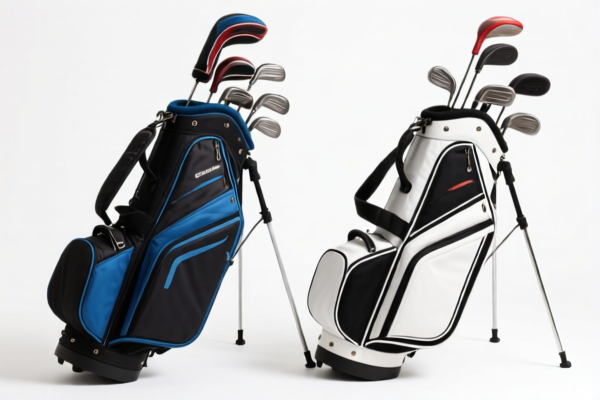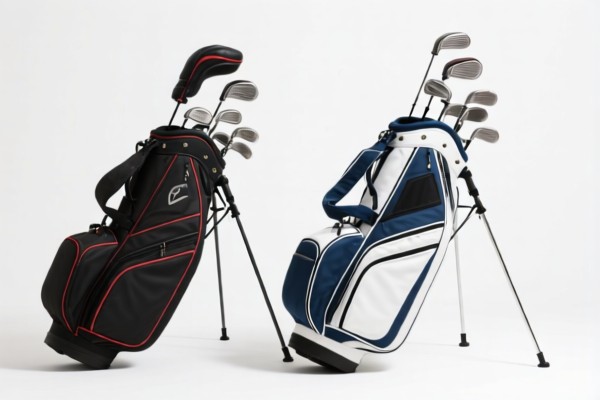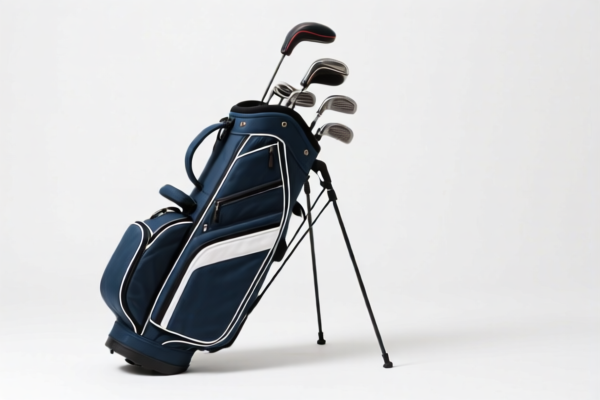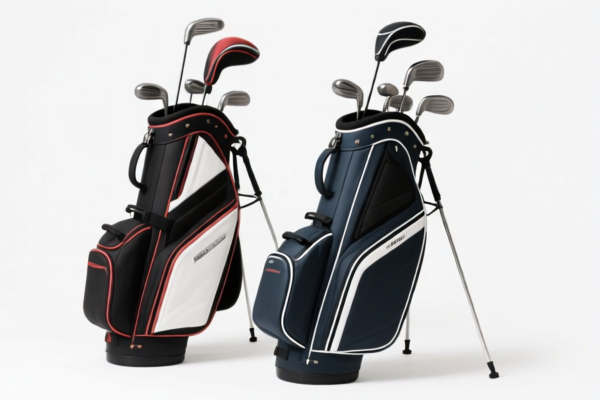| HS Code | Official Doc | Tariff Rate | Origin | Destination | Effective Date |
|---|---|---|---|---|---|
| 9506390060 | Doc | 42.4% | CN | US | 2025-05-12 |
| 9506996080 | Doc | 66.5% | CN | US | 2025-05-12 |
| 6114909070 | Doc | 35.6% | CN | US | 2025-05-12 |
| 6114909040 | Doc | 35.6% | CN | US | 2025-05-12 |




Golf Club Covers
Golf club covers are protective accessories designed to shield golf clubs, primarily the clubheads, from damage during transport and use. They are a common accessory for golfers of all skill levels.
Material
A variety of materials are used in the construction of golf club covers, each offering different levels of protection, durability, and aesthetics:
- Nylon: A common, affordable material. Offers good basic protection against scratches and minor dings. Often water-resistant.
- Polyester: Similar to nylon, offering good durability and resistance to wear and tear.
- Neoprene: A rubber-like material providing excellent protection against impacts and scratches. Often used for headcovers requiring a snug fit. Offers some thermal insulation.
- Leather: A premium material offering a classic look and feel. Provides good protection and durability, but requires more maintenance.
- PVC/Vinyl: Waterproof and easy to clean. Often used for more budget-friendly options.
- Knitted: Typically polyester blends. Offer a softer feel and are often used for decorative covers.
Purpose
- Protection from Scratches & Dings: The primary function is to prevent cosmetic damage to the clubheads during transport in golf bags, during club-to-club contact, and from impacts with other objects.
- Protection from Weather: Some covers offer protection against rain, dust, and sunlight, preserving the clubhead's finish.
- Identification: Distinctive covers can help identify clubs quickly, especially in shared golf bags or during tournaments.
- Aesthetic Appeal: Covers allow golfers to personalize their clubs and express their style.
Function
Golf club covers slip over the clubhead, encasing it in a protective layer. They typically feature an elastic band or a drawstring closure to secure the cover in place. Some covers are designed with a reinforced toe for added durability. The fit is important; a snug fit prevents the cover from easily slipping off during use, while a loose fit may not provide adequate protection.
Usage Scenarios
- During Transport: Essential when transporting clubs in a golf bag, whether in a car, airplane, or during walking between holes.
- In Golf Bags: Protect clubs from banging against each other and other items in the bag.
- During Storage: Protect clubs from dust, scratches, and other damage when not in use.
- Wet Conditions: Some covers provide water resistance, protecting clubs from rust and corrosion.
Common Types
- Individual Headcovers: Designed to fit a single club, typically sold individually or in sets. These are the most common type.
- Headcover Sets: Include covers for all clubs in a set (driver, fairway woods, hybrids, irons, wedges, putter).
- Putter Covers: Specifically designed for putters, often with a longer shape to protect the putter head and grip.
- Driver Covers: Larger and more robust to protect the larger driver head.
- Fairway Wood/Hybrid Covers: Designed to fit the shape of fairway woods and hybrids.
- Iron Covers: Typically a set of covers that fit over the heads of irons, often used during wet conditions or for added protection during transport. These can be individual or a single sleeve containing multiple clubs.
- Sock-Style Covers: Knit covers that slide over the clubhead.
- Pom-Pom Covers: Decorative covers with a pom-pom attached.
Golf club covers fall under articles and equipment for general physical exercise, gymnastics, athletics, other sports, or outdoor games. Specifically, they are categorized as golf clubs and other golf equipment, or parts and accessories thereof.
Here are the relevant HS codes based on the provided reference material:
- 9506390060: This HS code covers golf clubs and other golf equipment; parts and accessories thereof, specifically Other Parts of golf clubs. This would include covers designed as components for golf clubs.
- 95: Chapter 95 – Miscellaneous manufactured articles.
- 06: Heading 95.06 – Articles and equipment for general physical exercise, gymnastics, athletics, or other sports.
- 39: Subheading 95.06.39 – Golf clubs and other golf equipment; parts and accessories thereof.
- 0060: Further specifies Other Parts of golf clubs.
- Tax Details: Base tariff is 4.9%, with an additional tariff of 7.5%. After April 2, 2025, the additional tariff increases to 30%, resulting in a total tariff of 42.4%.
Regarding HS code 9506390060, please note the need to verify the item is indeed a part or accessory of a golf club.
Customer Reviews
No reviews yet.